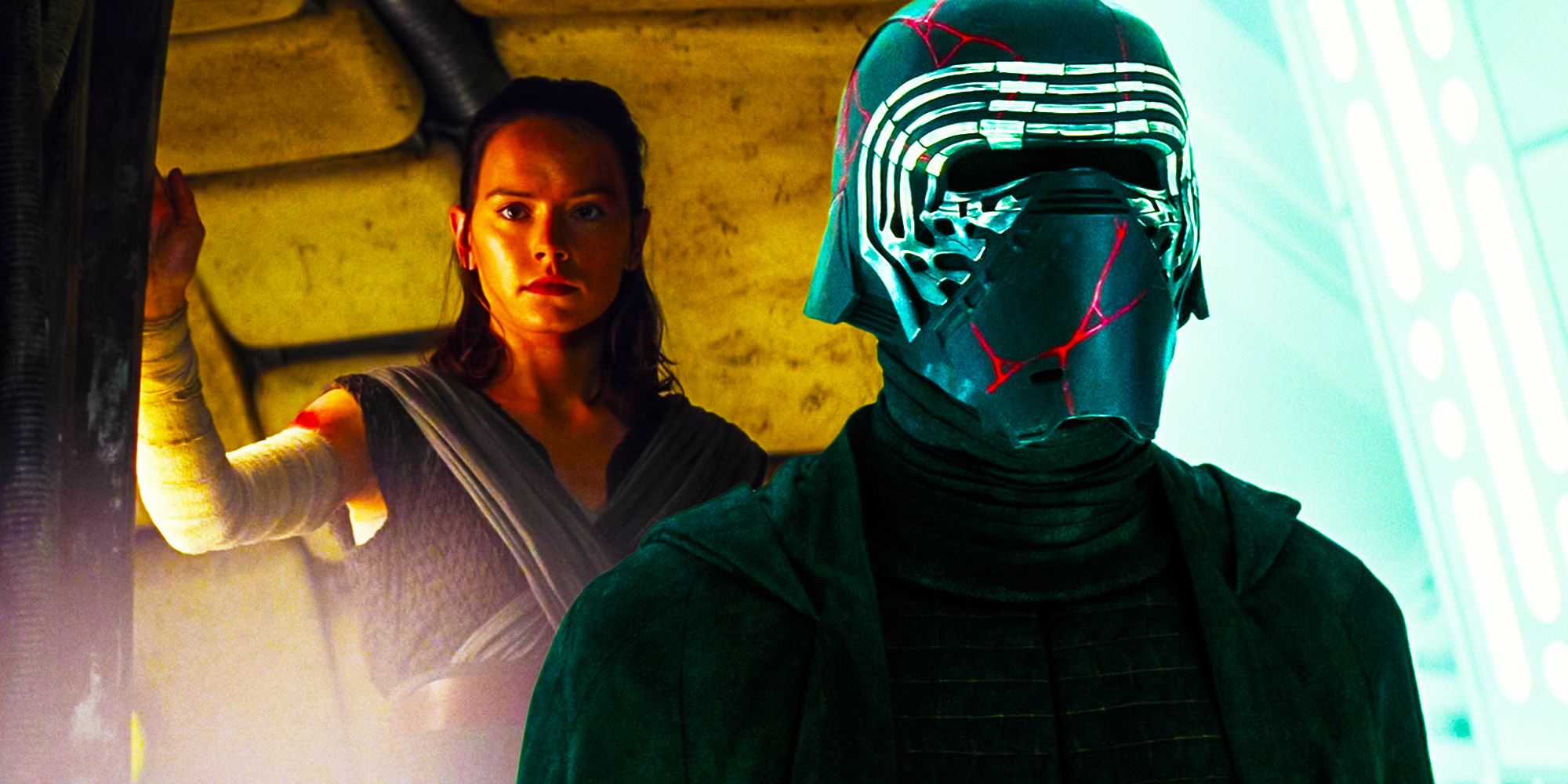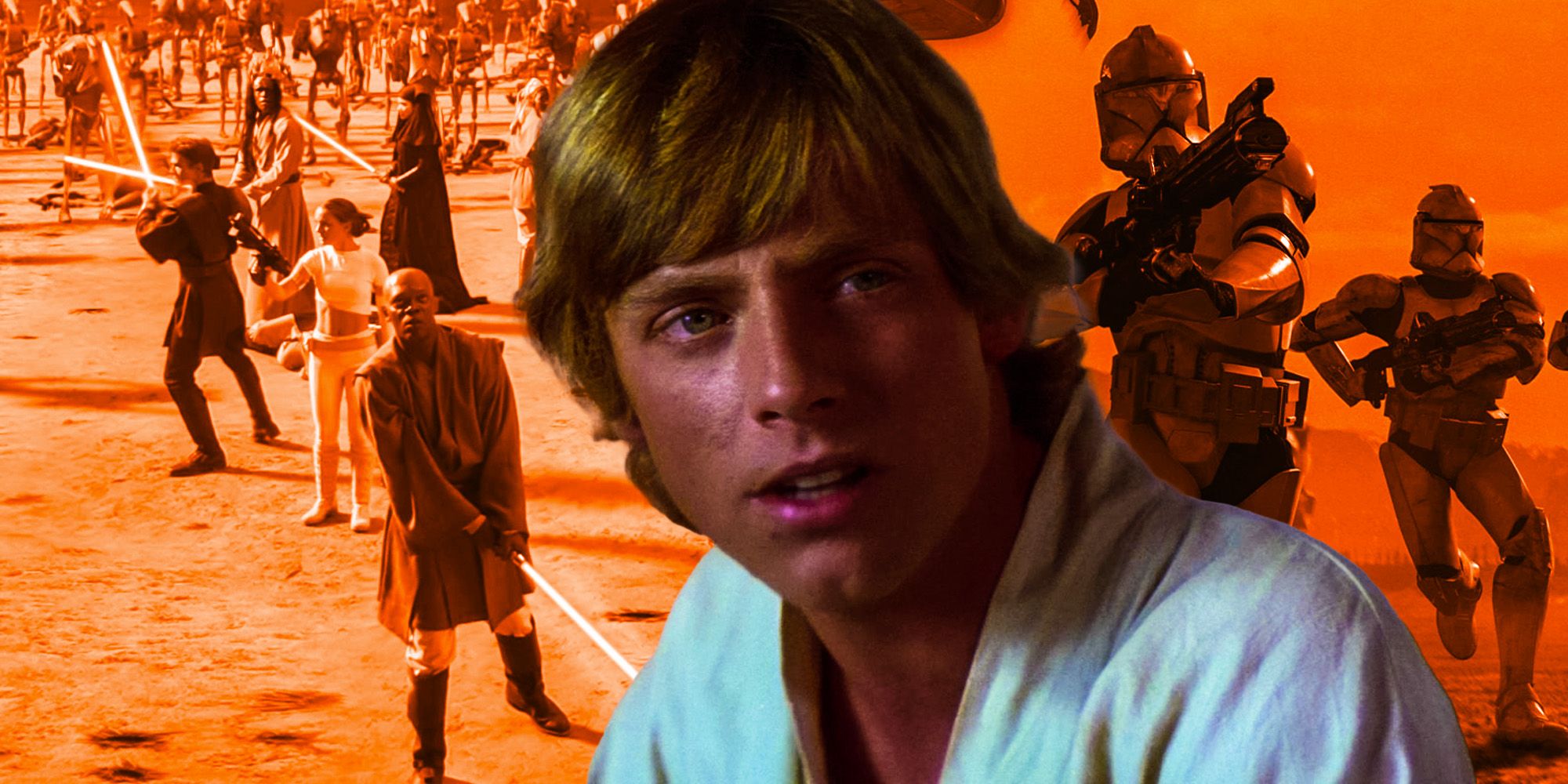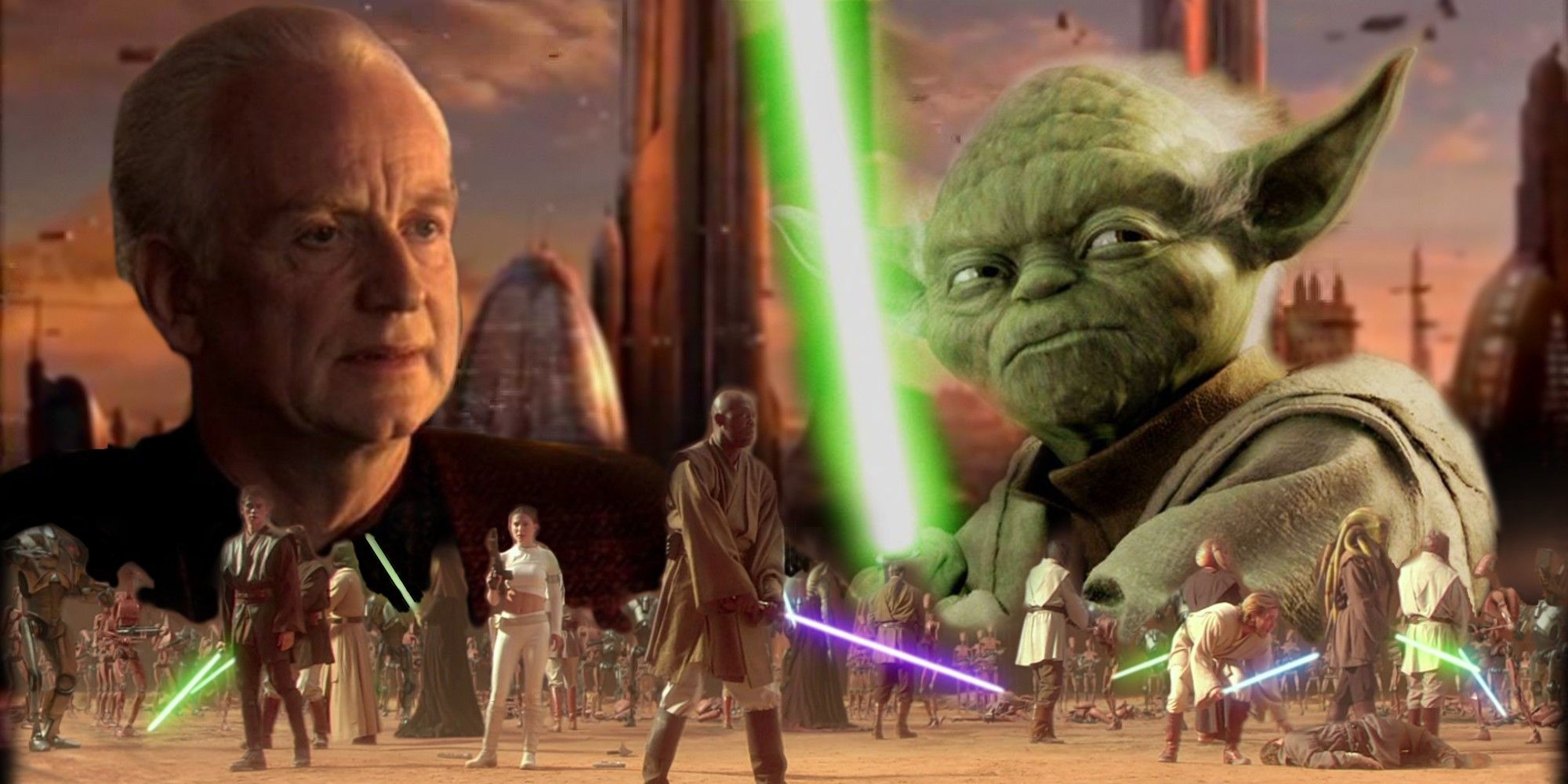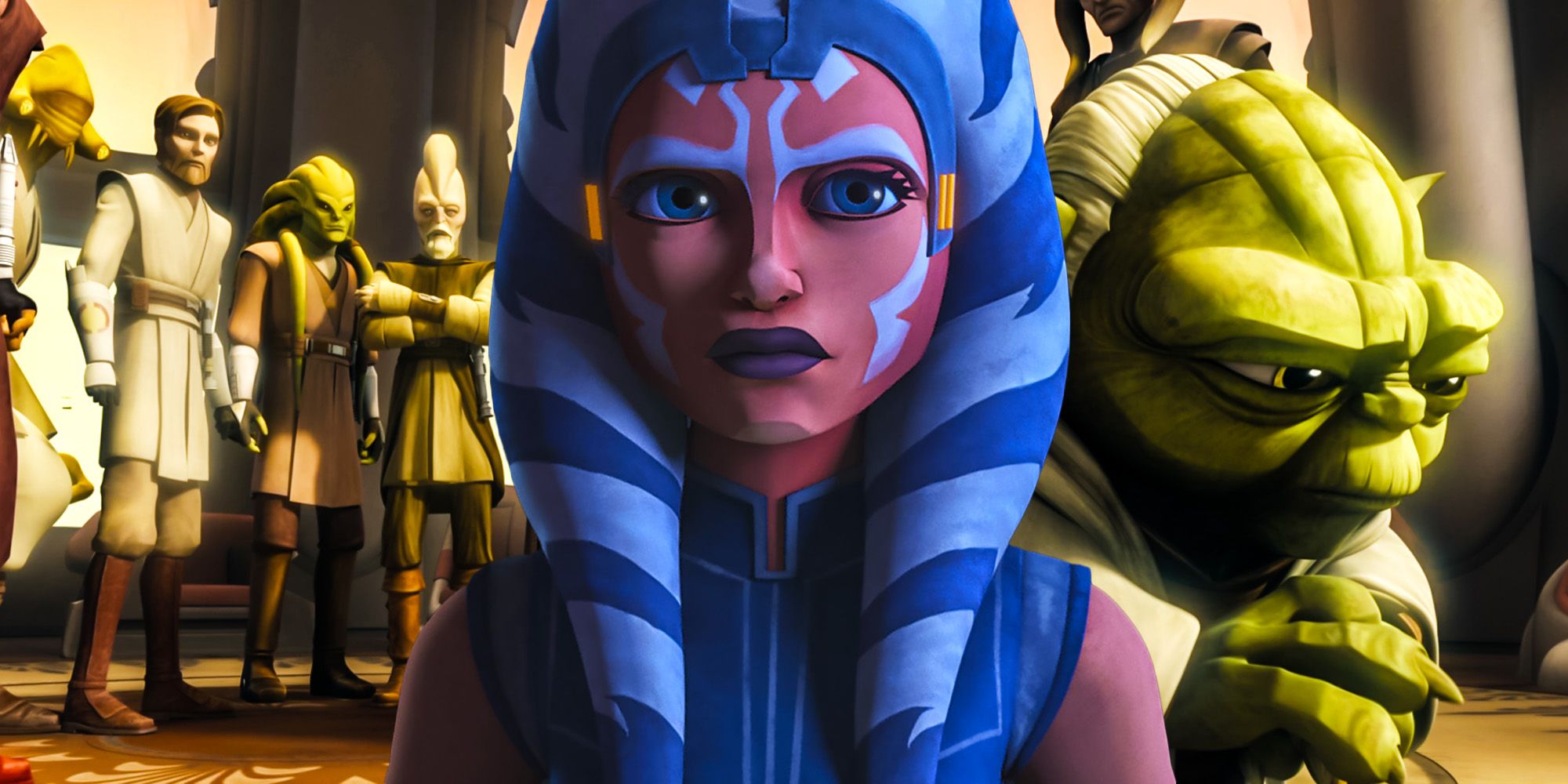In the Star Wars sequel trilogy, Rey and Kylo Ren are depicted as much more powerful than the highly trained prequel-era Jedi, but that apparent inconsistency has an in-universe explanation – one that involves Yoda, Palpatine, and perhaps even the Jedi Order as a whole. Ten years after Star Wars: Episode III – Revenge of the Sith, Star Wars returned to theaters with Star Wars: The Force Awakens, introducing a new Jedi, Rey, and a non-Sith villain, Kylo Ren. Unlike the prequels and much more close to the original trilogy, the Star Wars sequels only saw a handful of force-sensitive characters, and yet they all displayed impressive Force powers that made the prequel-era Jedi seem weaker in comparison.
While the concepts of Jedi and the Force are intrinsically connected with the Star Wars franchise, not every Star Wars era treated those in the same way. The old EU, the prequels, Clone Wars, and the sequel trilogy all gave their own spin on the story that George Lucas had created for the original movie, all of which made the Star Wars canon a living-breathing thing rather than some definitive lore. While that makes for more varied stories, it also ends up creating a series of Star Wars canon inconsistencies regarding power levels. Fortunately, there is enough material in the Star Wars lore to better explain those inconsistencies with an in-universe approach.
In theory, the prequel-era Jedi were supposed to be the strongest examples of a Jedi in all of the three trilogies. However, when compared to the feats of Rey, Kylo Ren, and even Luke and Leia in the sequel trilogy, the prequel-era Jedi seem no more than ordinary Force-sensitive warriors. While that does not apply for main characters like Obi-Wan and Anakin, it certainly is the case for most of the supporting and background Jedi characters. Despite the high number of Jedi who fought in the Clone Wars, plus several canon stories set around that era, a lot of what is seen from the Republic Jedi comes down to standard lightsaber skills and simple use of the Force. In terms of proper training, there is no comparison between the prequel Jedi and the sequel trilogy's force-sensitives, as the former were trained since the age of two. Therefore, that difference in power levels calls for a more detailed explanation. In the new Star Wars canon, the answer came in the form of a comic book and a novel, both of which revealed that Yoda and Palpatine were, for different reasons, holding the Jedi back during the prequel-era.
How The Prequels Changed The Concept Of Jedi & The Force
In the original trilogy, the Force is more of an ethereal concept that can hardly be understood as a tangible thing. Obi-Wan and Yoda used vague terms like "surround us" and "binds the galaxy together" when explaining what the Force is to Luke, as if not even the experienced Jedi masters knew exactly what that power was. Overall, the Force and the Jedi in the original trilogy were treated as mysterious things, to the point Han Solo did not even believe in the Force. There were only five trained Force users in the original trilogy, six total considering that Return of the Jedi retconned Leia as a Skywalker, which helped sell how special those warriors were.
Despite the mention of the Clone Wars, there was nothing in the original trilogy indicating that there used to be a Jedi Order. In fact, Tarkin refers to the Jedi as an old religion. All of those assumptions were proven wrong during the Star Wars prequel trilogy, which established the Jedi as a military-like organization based on ranks, rules, and a strict training regime. The Force was no longer an abstract concept but rather something that could be explained through the biology of the midi-chlorians.
Kylo Ren And Rey Seem Much More Powerful Than Prequel-Era Jedi
By approaching the Force-sensitives through a similar lens as the original trilogy, the Star Wars sequels rescued the sense of the unpredictability of the Force. Despite featuring only Rey, Kylo Ren, and Snoke as new explicitly Force-sensitive characters, the sequel trilogy revealed several new Force powers. For example, Kylo Ren stopped a blaster shot with the Force; Kylo and Rey could intuitively use Force-projection, including to teleport an object; Rey healed Kylo's fatal wound, and Kylo was able to use his life essence to bring Rey back to life. Those feats are much more impressive than anything the prequel-era Jedi were able to do, and in a way, they make even Anakin and Obi-Wan seem weaker in comparison. Even Darth Plagueis struggled to cheat death, something that Ben Solo was able to do for Rey with far less experience.
Both Yoda & Palpatine Are To Blame For The Prequel Jedi's Weakness
In Star Wars #20, Luke learns through the spirit of an ancient Jedi a different way to perceive the Force and its will. Elzar Mann, who lived through the High Republic era and studied the ways of the Force, tells Luke that whoever is gifted with being a Force-sensitive should open themselves to the Force's will. In other words, a Jedi or any Force-sensitive should be an instrument of the Force and not the other way around. According to Elzar Mann, the Jedi should be what the Force demands them to be on each occasion. That is exactly the opposite of what the Jedi Order and its leader Yoda taught, as they established a strict Jedi code that remained unaltered for hundreds of years, indirectly holding the Jedi off.
Palpatine also played a role in weakening the Jedi during the prequel era, and he did so with no particularly special technique. Instead, by acting as the "phantom menace" behind the long and tragic Clone Wars, Palpatine caused the Jedi to doubt their own choices and beliefs. There was a sense of fear spread throughout the galaxy, one that was impossible for any Jedi to explain, which turned the peacekeepers into distrustful warriors. As such, the prequel-era Jedi were not as balanced as they should have been, thus making them less powerful.
Why The Jedi Order Failed Force Users (Long Before The Clone Wars)
The only reason why the Jedi could be indirectly weakened by the actions of Yoda and Palpatine is that the Jedi Order as a whole had failed the Force users. As Luke tells Rey in Star Wars: The Last Jedi, the Force does not belong to the Jedi, and that was something the prequel-era Jedi failed to realize. By weaponizing the Force, the Jedi Council and its rules turned the Jedi into an army long before the Clone Wars began. Mace Windu claims that the Jedi are protectors of the peace, not warriors, and yet the Jedi Order was based on a military-like rank of masters, knights, and padawans. Despite being trained throughout their whole life, the prequel-era Jedi were never given a chance to naturally connect with the Force, as Elzar Mann described. That is why Star Wars sequels' characters Rey and Kylo Ren, who got to learn the ways of the Force in a more intuitive manner, ended up becoming much more powerful.





